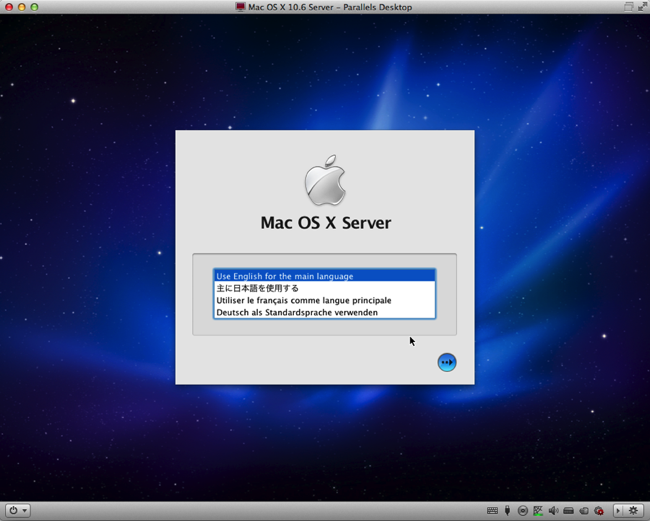- Mac Os X Snow Leopard Virtualbox Image Download Mac
- Hazard Leopards Website
- Mac Os Snow Leopard Vdi
- Hazard Snow Leopard
I almost pulled my hair out trying to install Snow Leopard into Virtual Box, but with a few minor tweaks I finally made it happen.I hope this helps. Snow Leopard is the gateway to update your Mac to a newer operating system via Apple Purchases. Having seen the negative reviews, I thought I'd give it a go and see what happens. Nothing to lose. Well, imagine my surprise when I copied the iso to a USB stick, stuck it into my 2008 MacBook Pro and it worked beautifully. Mac Os X 10.0 Cheetah Vhd For Virtualbox Windows 7. Mac OS X Snow Leopard 10.6 dmg for mac free. download full version. Mac OS X Snow Leopard 10.6 offline installer complete setup for mac OS with direct link. Version: Mac OS X 10.11 El Capitan (64 bit) or 10.12 Sierra. Memory size is 4 GB ( 70% of your Ram ) Virtual disk file.
- Once completed, your Mac OS X Snow Leopard VM should be ready for use. I suggest not installing the Oracle VM VirtualBox additions since they fail during the install on my version and there is an entire forum dedicated to hackery to get these to work.
- Note: This is a Retail installation guide, hence little more tricky.If you don’t mind an osx86 distro inside virtualbox and want ease of installation, tryout Install Mac OS X Hackintosh in VirtualBox Snow Leopard instead. Before you begin, make sure you have enough CPU.
| Reported by: | Owned by: | ||
|---|---|---|---|
| Component: | other | Version: | VirtualBox 5.2.18 |
| Keywords: | Cc: | ||
| Guest type: | OSX Server | Host type: | Windows |
Attachments
- Mac OS X 10.6-2018-09-29-22-56-21.log (250.0 KB) - added by nvittoa032 years ago.
- VBox.png (13.3 KB) - added by nvittoa032 years ago.
Change History
Changed 2 years ago by nvittoa03
Mac OS X Guest Snow Leopard 10.6.4 on PC with VirtualBox 3.2.6 – on Windows 7 32 Bit Last updated on February 21, 2011 by Dinesh Latest Oracle VirtualBox 3.2.6 is missing Mac OS X as guest and it supports only Server version. Download Old Version of Virtualbox for Mac Skip Development Versions tead. If you're on Windows, need to use OS X, but don't want to buy or build a new computer, reader Bobby Patton shows us how to run Snow Leopard in a virtual machine on Windows with just a few tweaks.
- attachmentMac OS X 10.6-2018-09-29-22-56-21.log added
Changed 2 years ago by nvittoa03
- attachmentVBox.png added
comment:2 Changed 2 years ago by janitor
Mac Os X Snow Leopard Virtualbox Image Download

- Status changed from new to closed
- Resolution set to invalid
Mac Os X Snow Leopard Iso For Virtualbox
 Has anyone got this working and can share how to do it, knows if my idea would work or perhaps there is a Multibeast or equivalent for 10.6 and Ivy Bridge out there?
Has anyone got this working and can share how to do it, knows if my idea would work or perhaps there is a Multibeast or equivalent for 10.6 and Ivy Bridge out there?It is impossible to install Mac OS X Snow Leopard inside Virtualbox using Windows in the past due to incompatibility issues. Unless you make use of custom modified Mac OS X builds, you may stand a chance in getting the Mac OS X Snow leopard installed inside Windows. But there is no need to wait any longer. Install Mac OS X Snow Leopard inside Virtualbox using Windows is possible. There are guides out there that state that you will need a Mac 10.6.3 disc etc, but there is no need to. I will show you how to install with the retail disc. I don’t think there is a need for any particular version. For anyone who claimed that they have failed or get stuck in the installation, it is probably due to the settings in Virtualbox.
Mac Os X Snow Leopard Virtualbox Image Download Mac
Step 1
Preparation
Hazard Leopards Website
1. Download or get a copy of the Mac OS X Snow Leopard installation CD. I don’t think it is appropriate for me to reveal openly where to get a copy. Ermm..
2. Download the iboot software from tonymac forums.
3. Install Virtualbox software. I don’t think I need to elaborate on how to do this? Download the Virtualbox Extension pack and install as well. This is optional, but I think it helps to improve the stability and usablity of the USB support when you install Mac OS X in Virtualbox
Reboot your computer so that the settings can be written and your system is updated
Step 2
Setup Phase
Start up the Virtualbox software. Click on “New” icon and create a new virtual machine. In the first entry, type in any name for this new machine. Select Mac OS X for the “Operating System” and “Mac OS X Server” for the Version.
Under General Settings, under Processor tab, use 1 CPU if you experience the Kernel Panic all the time. I find it more stable to run using a single CPU.
The rams will be default at 1Gigs, but if you have a ton of rams, it is recommended you adjust the memory higher. But don’t over do it or your own system will suffer from lag.
The next prompt will ask you if you wish to create a new disk or use an existing one, choose create a new disk and the type will be VDI. I prefer fixed size drives then dynamically expanding. Fixed size drives tend to be more stable.
Remember that you are going to install a Mac OS X which requires at least 12 Gigs of basic installation space. So create a large disk, personally I feel that it should be of at least 50 Gigs.
Mac Os Snow Leopard Vdi
After creating the disc, it will show up as one of the virtual machines you can use on the left side. Now we will need to edit some of the settings. Highlight your virtual machine and click on the “settings” icon at the top. You are required to make changes to the following.
1. Under the “System” => Exended features, uncheck the “Enable EFI”
Hazard Snow Leopard
2. Under the “Display” => Video Memory, increase it to the max and enable 3D (optional )
3. Under the “Storage” => remove the current arrangement and re-attach as IDE and not Sata. Also change the IDE Controller to be ICH6
Sponsored links
4. Audio should be set as Intel HD Audio
5. Network => Set as Nat but click on the “Advanced” tab and change it to Intel Pro/1000MT
Step 3
Installing
There are a few ways to mount the disc, but I will state one of the ways. Highlight your Mac OS X virtual machine and Start the virtual machine going. Once it has started, click on “Devices” => CD/DVD => Choose a virtual CD/DVD file.
Browse from here and navigate to your iboot.iso file and select that file. After that, click on the “Machine” ,menu and select “Reset”. The iboot interface should show up. If it does not show up, hit F12 when the virtual machine is just about to start up and hit c to choose to boot off from CD drive.
Now click on the Devices” => CD/DVD => Choose a virtual CD/DVD file. Choose your Mac OS X Snow Leopard.iso file or just point to the drive that has the physical Mac OS X DVD. Click on the virtual machine and Hit F5 so that all commands will be registered in the virtual machine and not on your Windows computer.
The icon should now change to a Mac OS X instead of iboot. Hit enter and it will proceed to install. You will eventually get to the Mac OS installation interface screen. After selecting your languge, click on the “Utilities” => “Disk Utility”. You will need to partition your drive.
At this phase of the installation, you can follow the previous guides on how to install the Mac OS X onto a normal computer and finish off with the installation. The only difference will be that when you need to eject the installation disc so that you can insert the iboot disc, simply mount and unmount the iso via the Virtualbox software.
Due to the fact that “Shared folders” in Virtualbox do not work for Mac at all, one way to share files between the Virtual Mac and the computer is to create a network file sharing setup and connect to the Windows via IP.
From your host Windows operating system, Press the “Windows Key + R” and type “cmd” without the quotes, hit enter to open the command prompt. Type “ipconfig” without the quotes and hit enter. You will get a listing of IP addresses. Identify the IP that belongs to your computer.
Using the Mac OS X in Virtualbox, you must connect to your Windows Desktop by means of networking. Go to the “Settings” option of the Mac OS X, under “Sharing”, put a tick on enable file sharing.
Click on the Finder, or Desktop and click on the “Go” option in the menu followed by “Connect to Server”. Key in your IP into the box as follows.
You may get a prompt asking you which account, password etc. This is the folder that you have set to share in your Windows computer. If you did not enable sharing at all in your Windows computer, you won’t be able to connect your Virtualbox Mac OS to your Windows.